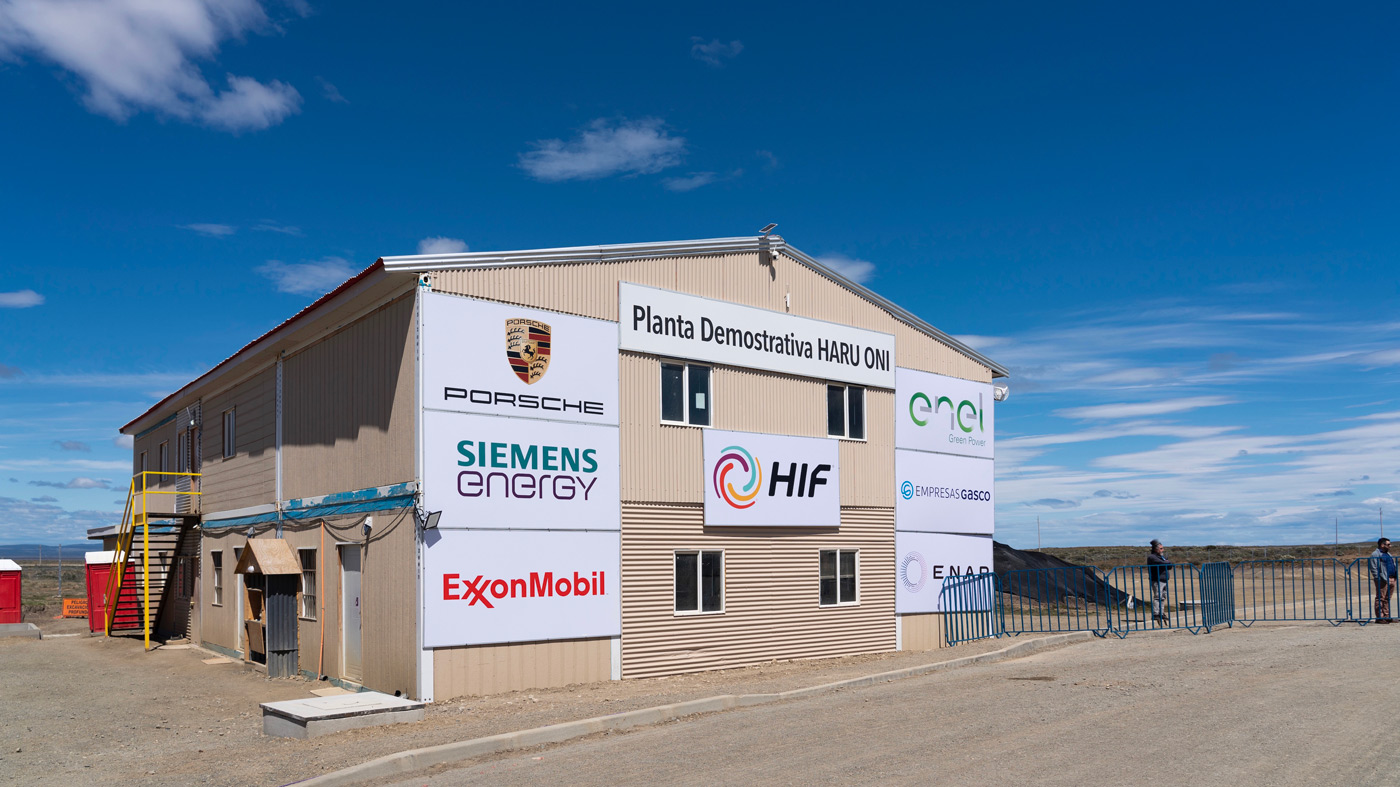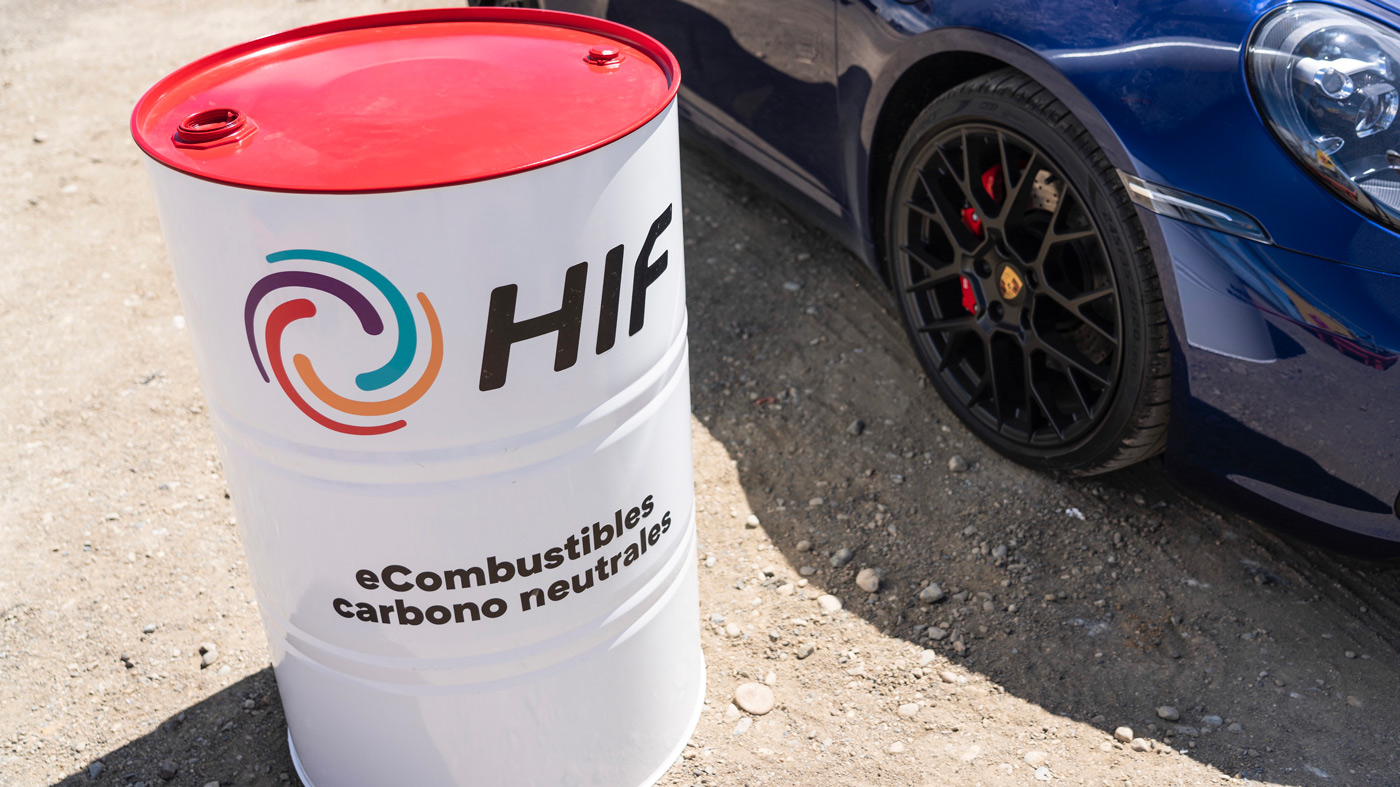The UK transport sector accounts for around a quarter of the country's carbon emissions with a reported provisional 2022 figure for CO2 emissions of some 112.5 million tonnes! Of that, something over around 51 million tonnes of CO2 was attributed to private cars and taxis. This is generated by the current UK vehicle park of 40.72 million vehicles, 35.14 million being cars that included only 1.1 million battery or Hybrid.
Decarbonising the vehicle fleet will only see sales bans of brand new combustion engined cars and hybrid electric/combustion engined cars from 2035 so can’t possibly see the current 34 plus million solely combustion engined cars replaced by electric powered ones for a very long time, certainly going past 2050 meaning that large volumes of liquid fuels will still be needed.
Lack of UK Government leadership in this area leaves only relatively small companies taking big financial risks in struggling along to develop and distribute any alternative fuels and of note the UK parliament’s cross party Transport Committee’s third ‘Fuelling the Future’ report is critical on the lack of any positive policy of the UK Government.
Existing Combustion Engines & How They Work
Now before looking in any more detail into low or carbon neutral liquid efuels there will remain one very big ‘elephant in the room’. This is that any combustion engined car will always emit noxious tailpipe exhaust gases from burning any liquid fuel means air quality will always be compromised.
Notwithstanding that negative there remains a longer term need to continue using liquid fuel and begs the obvious question of what can practically be done to replace the fossil sourced fuels with alternatives NOT from fossil sources. In fact there are alternatives but so far they are around in only very limited supplies from smaller companies who have been looking, indeed developing alternative manufactured liquid hydrocarbon fuels that could make a big dent in reducing the additional CO2 that is released when burning fossil fuels.
Alternative genuinely carbon neutral liquid fuel has another very significant benefit in that it is a ‘drop in’ replacement to the current fossil fuels. ‘Drop in’ means that it can be used in any existing car, van, truck or any other combustion engined equipment without modification. Additionally all the storage, transportation and associated supporting infrastructure is retained unchanged and this saves huge new investment. Of course there are negatives and a big one is the cost per litre that can be expected to be much higher.
Those costs are closely allied to the degree of Government leadership and is the biggest hurdle currently facing the development and introduction of carbon neutral fuels on a large scale. This is mainly because currently digging a hole in the ground to a puddle of oil and sucking it out, or ripping away huge forests to access oil sodden sands, and then expending huge energy to boil the oil from the sand is done at such a scale that it softens the cost enough to make big profits. Currently genuine carbon neutral fuel is only possible at small scale and is unlikely to grow significantly without Government assistance.
Interestingly in April 2023 the EU announced a change in legislation to allow new combustion engined vehicles to be sold after 2035 that are using carbon neutral ‘synthetic’ fuel. There will be complications that follow, such as how to enforce the use of more expensive renewable fuel against fossil fuels that has the same ‘drop in’ facility and the UK Government has yet to comment.
Manufacture of Synthetic Carbon Neutral Fuel (EFuels)
Synthetic fuels are not new and notably during World War 2 much of Germany’s military was fuelled by manufactured synthetic fuel created from other fossil fuel bases, mainly coal. It was a highly inefficient process realising much less energy from the end product that went into its manufacture, but war doesn’t look at such niceties. Today we have many other pressures and genuine carbon neutrality with efficiency is a big one. We already have some low carbon elements within our current pump fuels such as the Bio-ethanol in E5 and E10 petrol. These low carbon elements are created by processing a ‘carbon sourced material’, which can be both a fossil based (coal, natural gas, etc.), or a carbon neutral source (fermented grown or waste plant material), as is the case here hence the Bio-ethanol title.
The carbon source can be for example be carbon monoxide or carbon dioxide but to be carbon neutral this must be from what is termed a ‘defossilised’ source, so avoiding emitting additional CO2 into the atmosphere. This can come from perhaps the exhaust of another industrial process or even extracted direct from the atmosphere, the latter meaning this can be done from anywhere on the planet. This ‘defossilised’ carbon source is then combined with hydrogen to create e-methanol that is then converted through varying synthesis processes with water to create differing liquid fuels, petrol, diesel, kerosene, etc. This is known as ‘Electrofuel’ or ‘efuel’ and has that ‘drop in’ capability to be stored, transported and used in existing equipment and our engines.
Here genuine carbon neutrality also demands that the hydrogen used in the efuel manufacture also has to be carbon neutral, and this excludes offsetting with somewhat artificial carbon credits in planting trees to paint what could be a misleading picture. Here hydrogen is usually collected from the electrolysis of water, also an energy intensive process, where the electricity comes from a carbon neutral source commonly wind or solar, although we should not rule out hydro, wave or tidal generated electricity.
Is the UK Producing E-Fuels Yet?
Due to there not being any UK Government created focus in ‘efuels’ only relatively small scale development and availability has occurred in the UK. However in Germany Porsche and partners including Siemens have followed what it calls its Double E approach, Electricity and Efuels and has invested significantly in both.

Porsche’s efuel investment is in an efuel manufacturing company called HIF with their first (of many) efuel production facility in Punta Arenas in Chile. This plant commenced production in late 2022. The fuel that this Chilean plant manufacturers can (and is) being stored, transported and used in the same ways that current fossil fuels are dealt with, confirming the ‘drop in’ capability.

The choice of this rather remote location is because the winds that are found there are able to generate wind power for over 70% of the year whereas a similar wind turbine anywhere in Germany would achieve less than 30%. The wind drives a turbine that provides the green electricity that is needed to power the plant and also electrolyse the water to produce hydrogen. Additionally and critically the plant captures all the CO2 used in the efuel manufacture from the atmosphere so the whole process is carbon neutral.
Porsche & E-Fuel: What is their advice?
Porsche says the current efuel can be ‘dropped’ into any current and any classic Porsche model, which as they normally fill up at the same pumps as we do means the blend that they are making will be ideal for our classic cars too. The first deliveries of Chilean ‘efuel’ to Porsche saw use in its competition activities and to power its own road vehicle fleet in Germany.
The use in motorsport also confirms the octane rating of the current fuel is high and whilst motorsport is a very small activity the second area of use being Porsche’s own road vehicle fleet is already seeing the use of the fuel cascade down into day to day road use. In time as production costs reduce and volumes increase the cost per litre will also reduce so becoming viable for our classics too. Another bonus will be the fuel will be E100, or close to that number and knock current E5 and E10 into the long grass as far as ECO credentials are concerned!
Initially, the Chilean facility will be making only 130,000 litres of efuel a year, but the expectation is to expand with many other different worldwide locations, and in April 2023 HIF announced that they have just received official approvals to build the world’s biggest efuel manufacturing plant in Texas using the same process that when on stream will deliver 400,000 litres of efuel a year.
However, let’s not get carried away as just the UKs 2022 petrol sales were 16.3 billion litres puts things in perspective. This gives the scale of the mountain that efuels have to climb, but from small acorns big oak trees could grow!
Who are MGOC Spares?
At MGOC Spares, we provide dedicated parts and accessories for classic MG vehicles, including the MGB, Midget, MGC and many more.
With thousands of products in stock, we are your one-stop shop for all your classic car needs. Our wealth of expertise means that you can trust us to find the right part for your classic MG vehicle – whatever it may be.
Need support finding the right parts for your MG? Contact us today, we're happy to help!
efuel FAQs
Can e-fuels be used in my classic petrol or diesel car?
Absolutely! E-fuels, also known as synthetic fuels, are designed to be a direct replacement for conventional fuels like petrol and diesel. They can be used in existing combustion engine vehicles without any modifications required. These fuels are produced using renewable electricity and captured carbon dioxide, ensuring they are environmentally friendly and sustainable.
So, whether you have a classic MG or any other vintage car, you can switch to e-fuels and more renewable energies seamlessly.
How do e-fuels contribute to reducing carbon emissions compared to conventional fuels?
E-fuels play a crucial role in decarbonizing the transport sector. Unlike conventional fuels that release CO2 when burned, e-fuels are produced using renewable energy sources like wind or solar power and captured carbon dioxide. This means that the carbon emitted when using e-fuels is essentially recycled from the atmosphere, making the overall carbon footprint much lower.
By transitioning to e-fuels, we can significantly reduce the carbon emissions associated with petrol and diesel cars while still enjoying the benefits of high energy density and compatibility with existing infrastructure.
Are e-fuels a practical solution for reducing emissions from the current vehicle fleet?
Absolutely. While electric vehicles (EVs) are gaining traction, replacing the entire existing fleet of petrol and diesel cars with EVs will take time and significant infrastructure investment. E-fuels offer a practical interim solution by providing a carbon-neutral alternative that can be used in any combustion engine vehicle without the need for costly modifications or infrastructure changes.
This means we can start reducing emissions from the current vehicle fleet immediately while working towards a more sustainable future.